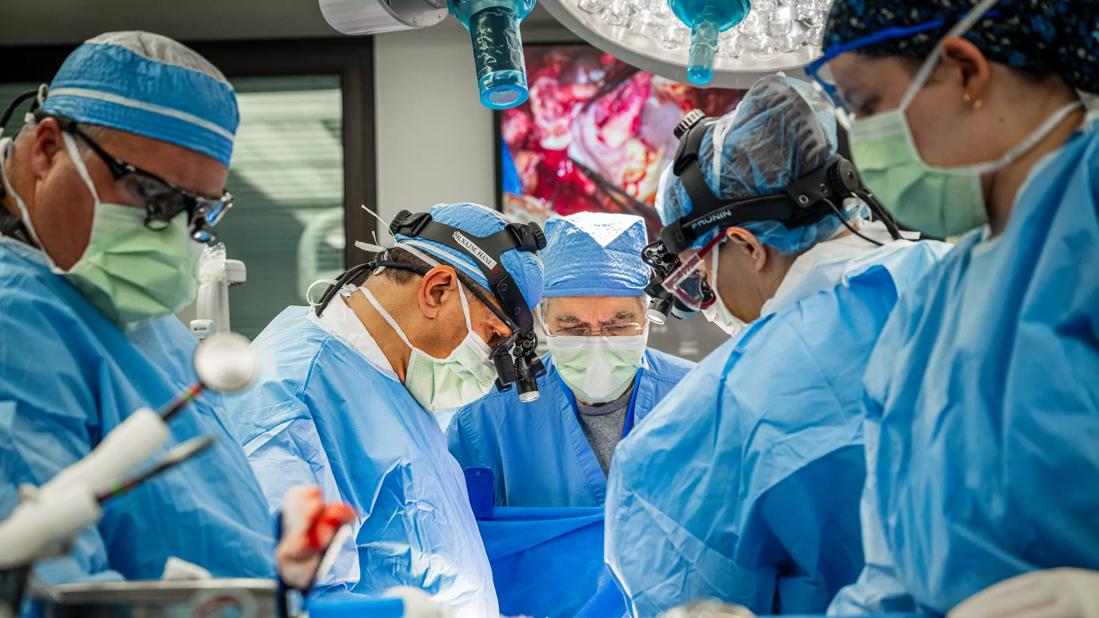Research findings reinforce the importance of patient selection and pre-emptive interventions

Acute kidney injury (AKI) following congenital heart surgery is common among patients who have undergone cardiac surgery; however, postoperative and mid-term outcomes following Fontan conversion (FC) surgery are not well-described.
Advertisement
Cleveland Clinic is a non-profit academic medical center. Advertising on our site helps support our mission. We do not endorse non-Cleveland Clinic products or services. Policy
FC surgery is indicated for patients who have previously undergone atrial-pulmonary Fontan and have subsequent atrial arrhythmias and dilated right atrium that necessitates conversion to a cavo-pulmonary connection and arrhythmia circuit cryoablation.
Bradley Marino, MD, MBA, Chair of the Department of Pediatric Cardiology at Cleveland Clinic, led this investigation with the goal to further characterize AKI-related outcomes in this patient population and improve patient selection and management.
The team examined a cohort of 139 patients with single ventricle congenital heart disease undergoing FC surgery at a single institution over a 12-year-period. Of these patients, 45% developed AKI following FC surgery.
Findings suggest that moderate-to-severe postoperative AKI was associated with older age, three or more sternotomies, prior catheter ablation procedure and greater preoperative atrial pressure.
Dr. Marino says these findings reinforce best practices around patient selection for FC surgery.
“Keep in mind, any Fontan patient who is having a Fontan conversion has had at least two, if not four or more, pump runs prior to this procedure, increasing their risk for postoperative AKI,” he says. “In my opinion, the fact that only 45% of these patients developed AKI means that we are likely selecting the right patients for the procedure.”
In a recent case, a patient was admitted to the cardiac intensive care unit and was slated for FC surgery. Given the patient’s risk factors for AKI, the team decided to instead wait for ventricular function to improve. He explains:
Advertisement
“It was an older atrial-pulmonary Fontan patient who had very bad atrial arrhythmias and came in with atrial flutter; we shocked the patient out of the flutter, but the ventricular function did not immediately improve. When the patient was seen in clinic, we ultimately decided that their clinical characteristics defied selection criteria for having a good outcome.”
Cleveland Clinic Children’s pediatric nephrology service is frequently involved in the evaluation of patients considered high risk for developing AKI following cardiac surgery.
Raed Bou Matar, MD, a pediatric nephrologist at Cleveland Clinic Children’s, says high-risk patients are closely monitored for signs of fluid overload, decreased urine output or electrolyte disturbances. This includes patients with chronic kidney disease, congenital kidney/ urinary tract anomalies and those with history of recurrent urinary tract infections.
He describes a step-wise approach the team has implemented to manage AKI post-cardiac surgery that “involves initial use of diuretics, fluid restriction and acute dialysis, hemodialysis or peritoneal dialysis (PD),” he says.
“Both continuous renal replacement therapy (CRRT) and PD have been shown to be safe and effective modalities to offset complications of AKI, such as fluid overload and electrolyte disturbances.”
In some cases, the team opts for a pre-emptive intervention such as placement of a dialysis catheter at the time of cardiac surgery in anticipation for postoperative dialysis, a strategy supported by the findings published in Dr. Marino’s paper.
Advertisement
“PD, in particular, is more likely to be successful when the need for dialysis is predicted in advance. Placement of the PD catheter at the time of surgery allows sufficient time for the PD catheter exit site to heal. A well-healed exit site minimizes the risk of fluid leakage, thereby allowing more successful PD therapy and preventing bacterial peritonitis,” Dr. Bou Matar explains.
Most patients with AKI do not require long-term dialysis or kidney transplant, though these options are available through Cleveland Clinic Children’s pediatric dialysis unit and pediatric kidney transplant program.
High clinical volumes, specialized pediatric care teams, and a breadth of treatment modalities are essential in selecting, treating and managing postoperative care in FC patients at risk for developing AKI.
“Ultimately, collaboration among pediatric cardiologist, cardiothoracic surgeons, intensivists, dieticians, pharmacists and social workers allows us to provide the best possible multidisciplinary care,” he concludes.
Advertisement
Advertisement

Integrated care model reduces length of stay, improves outpatient pain management

A closer look at the impact on procedures and patient outcomes

Experts advise thorough assessment of right ventricle and reinforcement of tricuspid valve

Study also finds that 26% of children with cancer have mutations in DNA repair genes

A closer look at current uses and future opportunities

Experts are challenging the one-size-fits-all paradigm

Quality improvement project addresses unplanned extubation

Cardiac imaging substudy is the latest paper originating from the VANISH trial